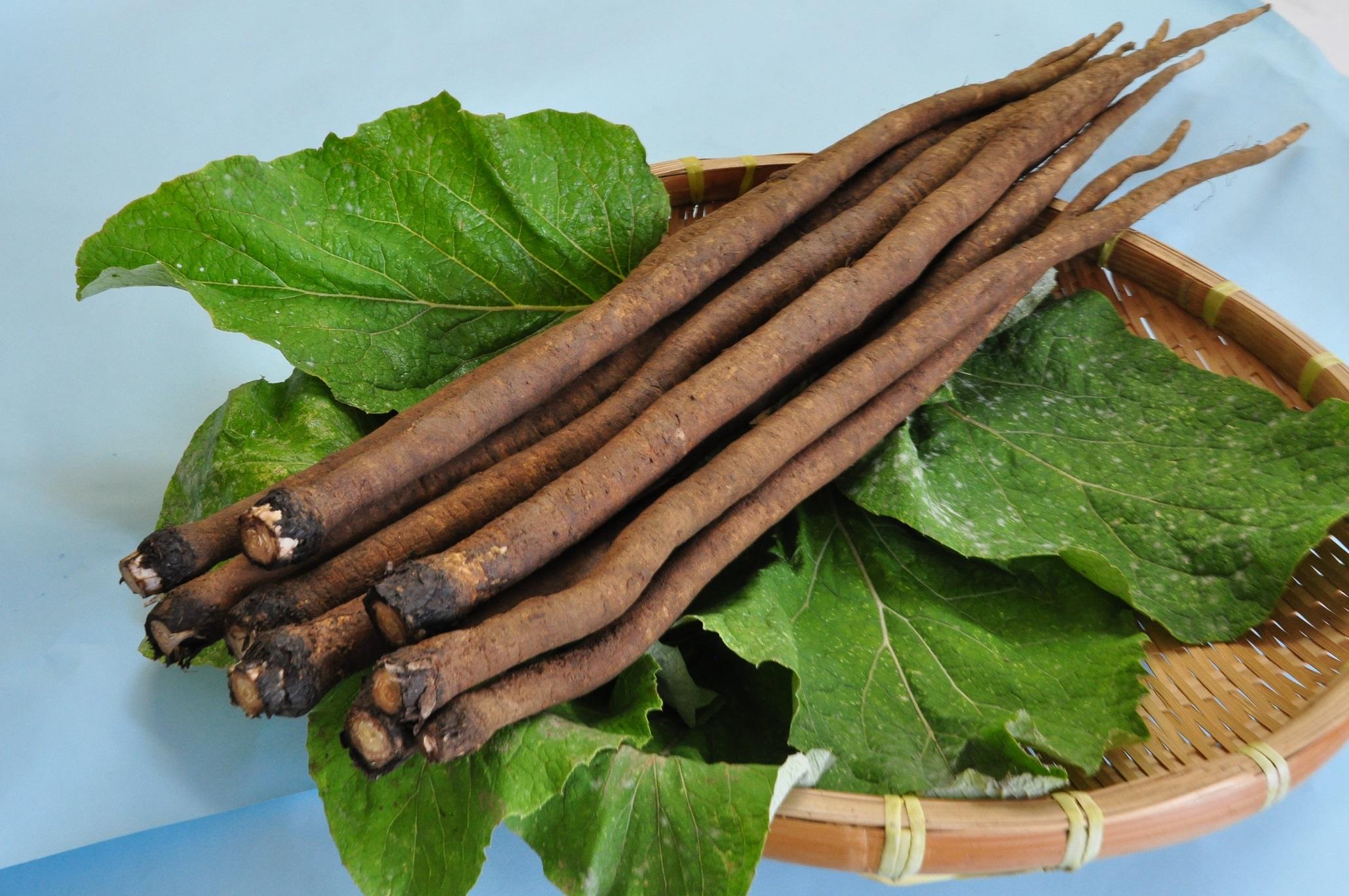Mito Gobou
| Registration Number | 40 |
|---|---|
| Name of the GI | Mito Gobou,Mitō Gobō |
| Class | Vegetables/ Cereal grains/Pulses |
| Date of Protection | 2017/09/15 |
| Producing Area |
Yamaguchi Prefecture
Mitō Village, Mine County |
| Applicant - Name and Address | JA Yamaguchi |
"Mito Gobou" is the gobou (1) (2) grown in the red and clay-like soils of Mito Town in Yamaguchi Prefecture. These gobou have characteristically long roots with even width down to their tips. These roots have a soft texture and are highly aromatic. They are traded at a premium price as their quality is highly esteemed by markets.
To allow the plants to develop their long roots, producers use machines to carefully plow their fields of red, clay-like soil to a depth of about 1m. After an elastic layer of soil has thus been created, the gobou are cultivated.
After harvesting, to prevent loss of the gobou's natural aroma, a traditional technique called "sunaderu" (3) is used in order to remove soil that is still attached to the roots.
The producing area of "Mito Gobou" is a basin created by the natural erosion of limestone. The soil is reddish brown, heavy, and clay-like. As a result of this unique terrain and soil, gobou there grow slowly, subjected to pressure from the soil. Further, producers have established methods of making the land fertile, including soil amelioration and deep plowing. As a result of these conditions, "Mito Gobou" characteristically has smooth flesh and a soft texture. Gobou cultivation in Mito Town has long history, and it is said that, during the Edo period (4), it was even used as payment in kind for taxes.
After the establishment of the Mito Town Burdock Production Association in 1986, cultivation methods were unified and shipping standards were clarified. Today, production has been carried out for over 30 years.
- Gobou: Gobou or reater burdock was brought to Japan from China as a medicinal herb before the 10th century, but it is said that the Japanese have been eating it as a vegetable from the middle of the Heian Period (794-1185) onwards. Greater burdock is rich in dietary fiber and minerals and includes polyphenols. It is thought to contribute to the alleviation of constipation and prevention of arteriosclerosis.
- Gobou: Gobou or greater burdock puts down long, firm roots deep into the ground, thus it is believed that it metaphorically strengthens the foundations of the household. It therefore is included in Osechi (the special dishes eaten at New Year) as a harbinger of good fortune.
- Sunaderu: it is the process of removing soil from the roots of the greater burdock plant without washing them with water. Instead, soil is removed without damaging the roots' skin by carefully rubbing them down by hand one at a time with rice straw or a soft cloth.
- The Edo Period: 1603-1867. It is a period of Japanese history characterized by the establishment of a shogunate (feudal military government) in Edo (now Tokyo). Political administration under the Tokugawa clan began when Tokugawa Ieyasu became the era's first shogun.


